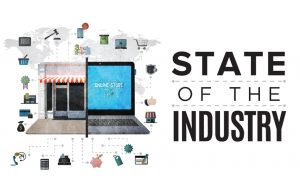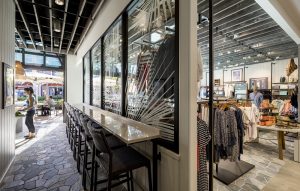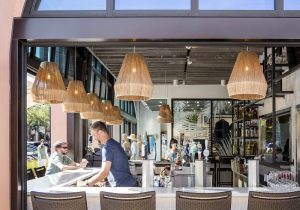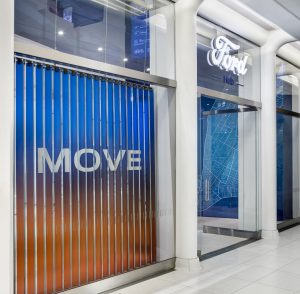An influx of store closing announcements this year might suggest that retail as we know it is doomed – and that’s partially true. While the industry has grown weary of the term “omnichannel,” the necessity to create seamless brand experiences between physical and online stores hasn’t (and isn’t) going away. And for legacy retailers that have resisted change, holding out hope that they could weather the inevitable storm, it might just be their last chance to adapt and survive.
NOT JUST BUSINESS AS USUAL
In the past several years, traditional store formats have undergone a metamorphosis: In-store inventory has been scaled back (or eliminated completely); digital integration has been a vital tool to stay dynamic and present valuable brand content and engage consumers; and experiential concepts, including food and beverage offers as well as community-gathering spaces, among others, have been presented to entice shoppers beyond a transactional model.
“From a format standpoint, [retail is] moving to stores that are different in nature, that are really focusing on customer engagement in the store, and less about being a store that’s focused on immediate selling or having lots of inventory in stock,” says Neil Stern, senior partner, McMillanDoolittle (Chicago).
Embracing a solely experiential format, Ford Hub features interactive digital content to introduce shoppers to its repositioning as a transportation brand. / Courtesy of FITCH; Photography: RICHARD CADAN, FAIRFIELD, CONN.
While these methods continue to remain at the forefront, simply adapting strategies that have been successful for other retailers won’t always suffice as a one-size-fits-all solution, explains Lee Peterson, executive vp, brand, strategy & design, WD Partners (Dublin, Ohio), who says it’s all too often regarded in that way. “Customers would expect the utmost in technology from Samsung or Apple, but from Urban Outfitters, not so much. If I can get a slice of pizza and listen to vinyl, that’d be all the technology I need.”
Advertisement
In April, Apple introduced in-store educational programs, called “Today at Apple,” to engage and entertain customers. / Courtesy of Apple, Cupertino, Calif.
In terms of presenting innovative store formats, independent brands and e-commerce startups making their brick-and-mortar debuts are at an advantage, in a way, because they’re not confined to past retail methodologies, explains Loretta Soffe, principal, Loretta Soffe Consulting (Seattle). “They are not constrained by history, because they’ve never had stores before, so they prioritize engagement over traditional productivity metrics such as sales per square foot,” she explains, adding that brick-and-mortar ROI should be regarded now as more qualitative than quantitative.
Another benefit for these young, formerly online-only brands is a lack of customer expectations, says Stern. “When traditional retailers have tried [purely experiential] stores, it hasn’t always worked as well, because the expectation from the customer is when I go to your stores, I expect the merchandise to be there … For someone like Warby Parker, the expectations are still being set, so they have the advantage of being able to create the experience as opposed to trying to adapt it.”
GET IN, GET OUT
Incorporating experiential moments in store has proven successful in engaging customers, but while today’s shoppers value experiences over material purchases, they value their time even more – especially when they’ve already browsed offerings online and know exactly what they want. This means that while some brands search for their showstopping wow moments, others must determine how to get customers in and out of the store as quickly as possible without sacrificing customer service.
SOURCE: DELOITTE, "GLOBAL POWERS OF RETAILING 2017"
Advertisement
“[Stores] will move in two distinct directions,” says Stern. “They are going to be these points of customer engagement and be experiential … and the other dimension is that [they will be] very streamlined, fast, have great customer service, online pickup points, and really emphasize the convenience of retail.”
The question is, says Peterson, “How much of the ‘store of the future’ should be a fulfillment center, and how much should be a playground?” Sephora is one brand that’s mastered this duality, says Peterson, citing the retailer’s tech-driven product-narrowing platform as an industry standout, along with Amazon Go’s seamless checkout process, which he says could be the direction for others in the future.
THE GOLDILOCKS PHENOMENON
Because of the rate at which stores are closing, from the outside looking in, the retail industry might appear to be in utter turmoil. The truth is, says Stern, many retailers still have too many stores or those that are too large for today’s business, adding that legacy retailers’ biggest challenge is the pace at which sales have gone online to e-commerce. Similarly, Peterson attributes the onslaught of store-closing headlines this year to retailers still working to find their “right size.”
“Twelve percent of retail is e-commerce,” says Stern. “But that varies fairly dramatically by category … It seems like when it gets to about 20 percent penetration, which is where it is now in categories like sporting goods and apparel, that the economics of the existing stores are really going to be challenged.”
Advertisement
So the question then becomes: How many stores are absolutely necessary to drive shoppers to brands’ online storefronts? “If you have ten unproductive stores, sure, maybe a couple of them should close,” says Soffe. For others, she notes, such as Bebe or American Apparel, who have been bleeding capital for some time, “[closing all of their stores] is a matter of necessity – it’s dollars and cents – it’s the retailers with capital that have a little more staying power as they have room to experiment with innovative ideas and store formats.”
CONSUMER CONFIDENCE
While the state of the retail industry has been in flux this year, the economy at large is relatively robust, says PNC Bank (Pittsburgh) Economist Mekael Teshome. “The wrongs that got us into the Great Recession have, over the last eight years, been righting themselves, and the U.S. economy is moving toward balance.”
Despite a Federal Reserve interest rate hike in March and less-than-expected first-quarter consumer spending results, Teshome says he expects that consumer spending will be fairly positive this year. “We’re expecting 2.3 percent growth in consumer spending, as part of the GDP component … so overall, our outlook for the retail sector is pretty good.”
Teshome notes that consumers will be in a better position to part with their discretionary dollars as job and income growth occurs, which he expects to be the case over the next couple of years. “One wild card that could boost spending even more is tax cuts [which have been proposed by the Trump administration], but we don’t have a lot of certainty about how much we’ll see taxes reduced … We can’t forecast any hard numbers until the legislation is confirmed.”
FOCUS ON FUNDAMENTALS
Tommy Bahama combines a traditional store format with an open-air beverage service and dining concept. / Courtesy of MG2; Photography: Magda Biernat, New York
Although the retail industry faces a lot of uncertainty with regards to which formats will prove sustainable and successful over time, the fact remains that brick-and-mortar is still customers’ preferred method to purchase goods. Where retailers need to focus, Soffe says, is on experience and engagement, whether online or in physical stores. “If a brand can engage the consumer, their chances of selling to them are much higher.” Loyal customers shop with the brands they know and trust enough to give them the best experience, leading them to return time and time again.
|
MEET THE EXPERTS
|
|
Neil Stern
Senior Partner, McMillanDoolittle
|
Neil specializes in strategic planning and the development of new retail concepts. He prides himself on long-standing relationships and repeat engagements with valued clients, many extending more than 10 years. Neil leads the company’s food retail and due diligence sectors. During his career at McMillanDoolittle, Neil has developed strategies and new concepts for a diverse variety of clients across the retail industry. |
|
Loretta Soffe
Principal, Loretta Soffe Consulting
|
Loretta is an award-winning merchant renowned for pioneering consumer-based growth strategies, building private and national brands, and bridging the gap between traditional and digital retail. Following a 24-year career at Nordstrom, where she served as evp of women’s apparel, Loretta transitioned into the private sector and has become a trusted advisor and consultant to a broad spectrum of ceos, presidents and equity investors, while providing strategic direction to her high-profile clients. |
|
Mekael Teshome
Economist,
PNC Bank, N.A.
|
Mekael is assistant vp and economist for The PNC Financial Services Group, responsible for contributing to PNC’s regional, national and international economic analysis. Mekael focuses on state and metropolitan economies within PNC’s economic footprint as well as industry analysis. He serves on the board of economic advisors for the North Carolina Chamber Foundation and the board of directors of the Economic Club of Pittsburgh.
|
|
Lee Peterson
Executive VP,
Brand, Strategy & Design, WD Partners
|
With more than 30 years of experience as a retailer, strategist and leader in brand and design, Lee brings an innovative approach to strategic assessment and brand development by understanding cultural trends, consumer demographics and buyer behavior. At WD Partners, he leads a group of creatives working on a variety of retail, restaurant and brand experiences.
|
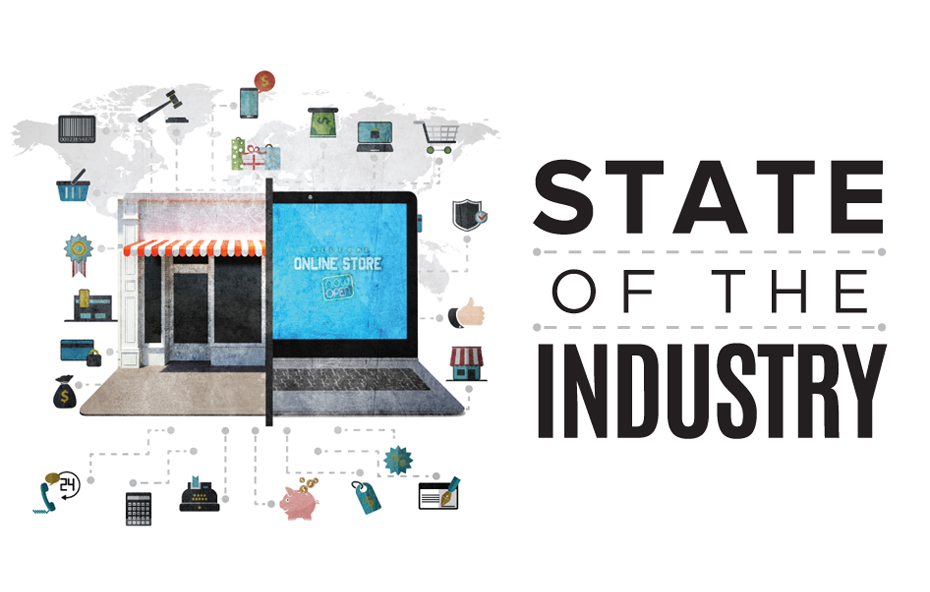

 Photo Gallery1 week ago
Photo Gallery1 week ago
 Headlines3 days ago
Headlines3 days ago
 Headlines1 week ago
Headlines1 week ago
 Headlines2 weeks ago
Headlines2 weeks ago
 Headlines1 week ago
Headlines1 week ago
 Designer Dozen1 week ago
Designer Dozen1 week ago
 Headlines1 week ago
Headlines1 week ago
 Headlines1 week ago
Headlines1 week ago
